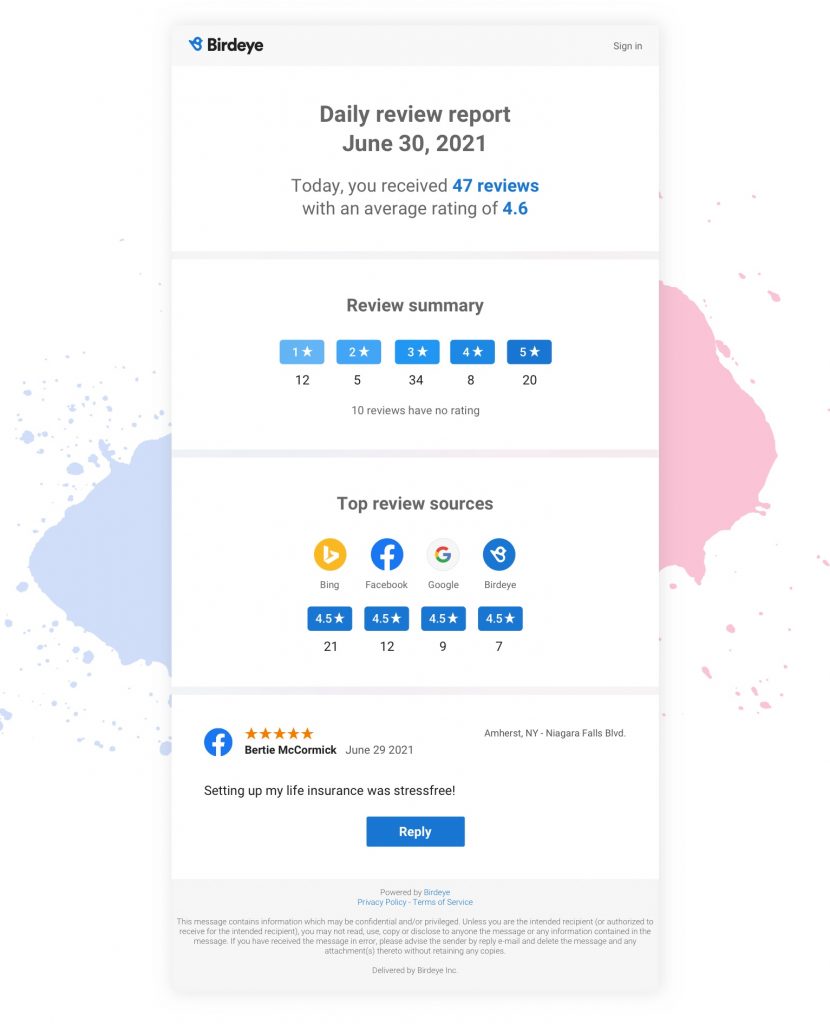These days, customers aren’t satisfied with experiences that are just “okay”. They’re looking for businesses that can go above and beyond their expectations. Review sites like Google and Facebook give them the option to read the opinions of other customers and find businesses that can deliver fantastic experiences. If they don’t like what they see, the competition is just a click away.
It’s a tough environment for a multi-location enterprise business — but with the right strategy, there is a way to drive growth. With a Voice of the Customer program, marketing teams can listen to customer feedback and adjust their operations accordingly. By being proactive, businesses can solve issues before angry customers complain about them publically.
To learn how to build a Voice of the Customer program that delights customers and generates results, we sat down with Ashley Cash, Senior Manager of Customer Experience at Globe Life. Here’s an abridged version of our conversation.
Can you tell us a little bit about Globe Life and the insurance products and services that you offer to your customers, and how your team manages the customer journey?
Globe Life is the parent company for five insurance brands. I always give the analogy that you can think of Globe Life very similarly to Mariott. Marriott is the parent company, but there’s also Courtyard by Marriott and other sub-brands that serve various niches. Our company is structured the same way.

My team gets involved after the sales process and handles communication for policyholders. A lot of the work that I do is making sure that regardless of the channel, every customer has a consistent experience that also matches our brand voice. For us, that’s making sure that insurance is accessible, it is approachable, and that we really help people protect those that they love.
Where do you think other businesses fall short in delivering value across the customer journey?
Businesses often think about the journey from the business’s perspective and not the customer’s. To start the process of understanding the customer journey, it’s important to ask yourself a few questions. Who is the customer? What do they care about? What do they want? What do they value? How do we deliver on that? Once you answer those questions, you can then weave your brand voice or your brand standards in. If you’re not starting with what’s important to the customer, you’re going to get it wrong every time.
By doing this exercise, we have learned that social proof plays a big role in the decision-making process. We’ve really put a focus on collecting reviews from customers who have experience with our products, our claims, and our employees. After all, our target customer doesn’t believe it when we say we’re a great company or if we talk about what we’ve done in our communities. People want to hear it from other customers. That’s why it’s so important to deliver fantastic experiences and take the right steps to enable your customers to write reviews and refer your business.
Can you tell us about the tools and processes that you’re using to support your Voice of the Customer program?
One tool that we use is Birdeye. It enables us to do two things. One is that every executive in our company gets a Daily Digest email from Birdeye that contains all of the reviews from the previous day. That means everyone reads the good, the bad, and the ugly from customer reviews.
My team and I take some of the key themes that we see in reviews and then meet with the appropriate department heads to determine how we can take this feedback and either improve operations or start a new initiative. Because executives see it every day, it’s top of mind for them. Sometimes, they’re asking me about something in those review emails before I even get to them. The Review Reports are so simple that they can digest at a glance, and it’s made customer feedback an essential part of our company culture.

We’ve also developed some processes on how to triage negative reviews. Those range from things as simple as reaching out to a customer to resolve an issue all the way up to responding to someone alleging fraud or misconduct and escalating that to the right channels.
Do you have any recommendations to other businesses that perhaps don’t have a fully developed Voice of the Customer program?
If you’re working with a lean team, partnering with another company is critical. After all, you don’t know what you don’t know. To build a successful Voice of the Customer program, it’s important to get expertise outside of your company.
Then, before you start building a VoC program, get a clear understanding of who your customers are. Otherwise, it’s easy to misinterpret some of the findings from customer feedback.
Here’s an example: we know that a significant subset of our customers are in their 60s and 70s. Having that knowledge then gives me the ability to read between the lines with customer feedback. When someone is talking about waiting on hold for 20 minutes, it means something different when they are retired rather than of working age. Most of the time, they’re able to wait to talk to a representative, but they just don’t find it a good customer experience.
How has COVID-19 affected your customer experience and Voice of the Customer program?
COVID-19 has done two things to Globe Life. It has exposed to us internally our gaps in our digital experience. Previously, many of these issues weren’t a big deal. Now that everything is online, we need to pay closer attention to how we’re communicating with customers through digital.
There’s been another consequence of this shift. Many of our locations now have a much bigger reach than we ever thought possible. We’re not bound by geographies anymore. Now that we have more folks working from home, we’re able to hire people in different geographies and different time zones. That means that our phone support is available later than it used to be.
Get started with a Voice of the Customer program
The first step to building a successful Voice of the Customer program is to find a trusted software partner. For Globe Life and 200,000 other businesses, that trusted partner is Birdeye. Birdeye’s award-winning all-in-one Experience Marketing platform can help your team automate processes, build a Voice of the Customer program, and build a winning digital experience for the post-pandemic era.
Originally published









